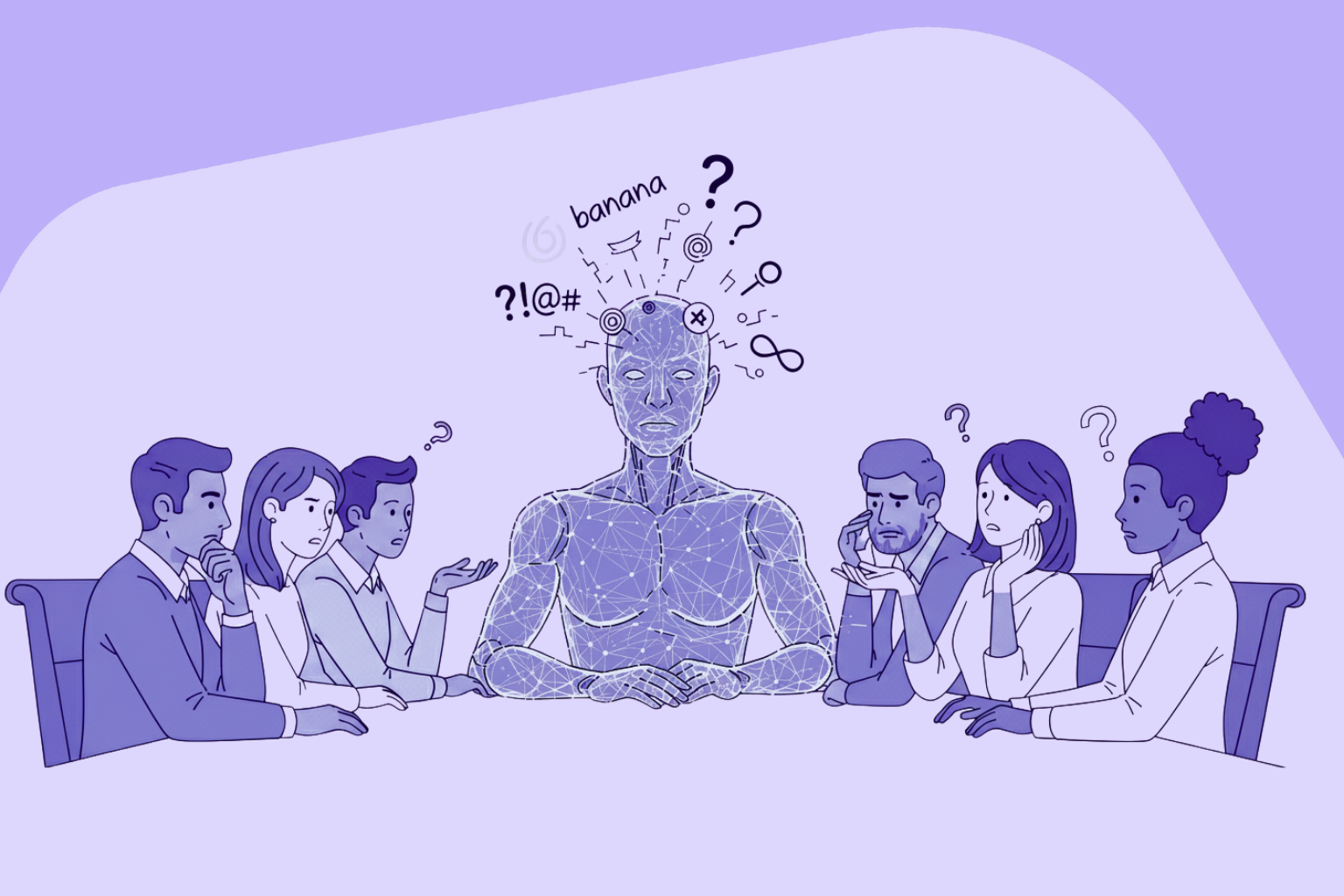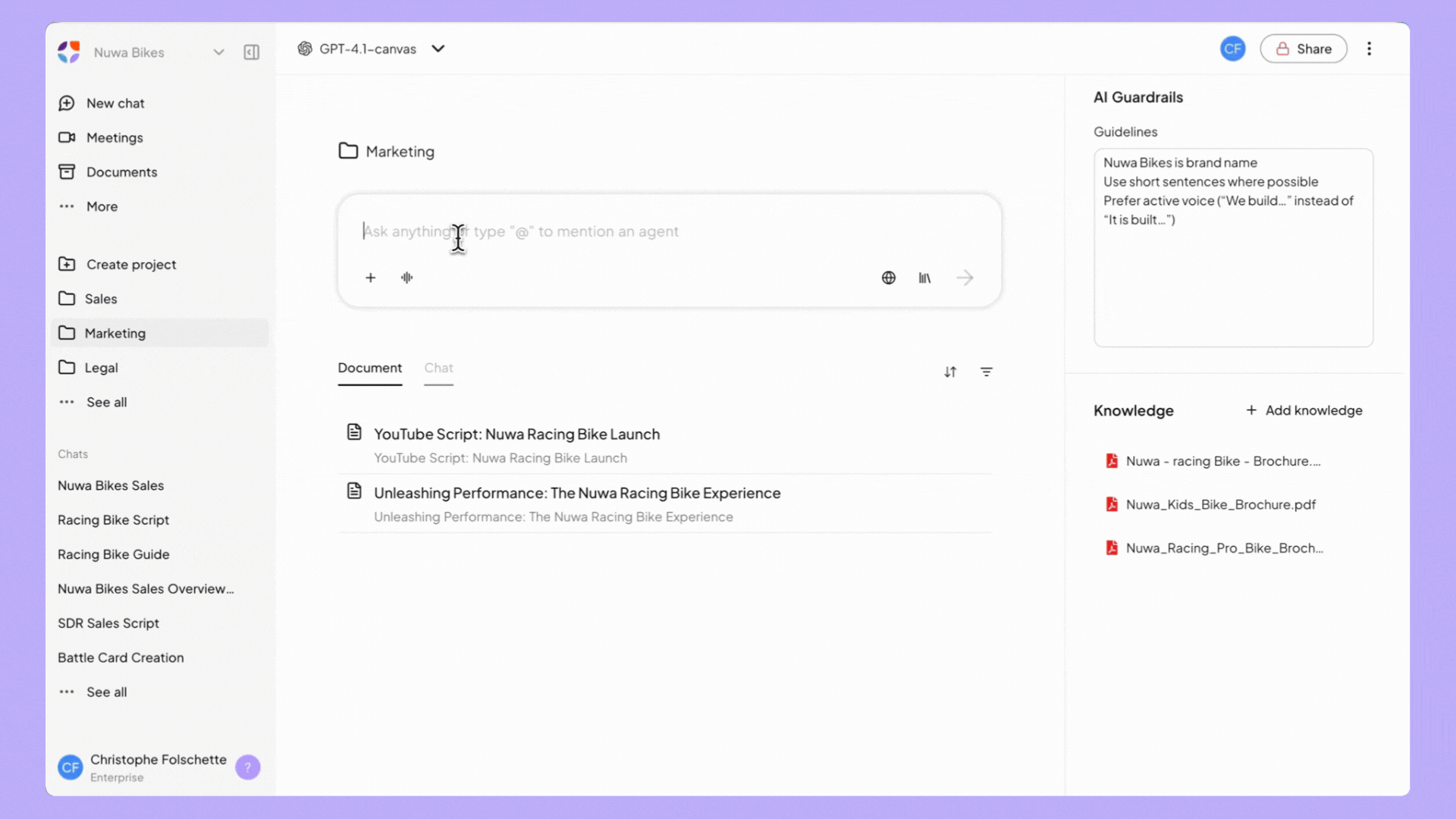Why Tools Like ChatGPT “Hallucinate” — and How Companies Can Minimize the Risk

🔍 Studies show: even modern models are wrong 20–40% of the time. In sensitive fields like law or finance, the error rate can spike to as high as 88%.
This article explains:
- Why hallucinations are inevitable when AI is used without verification.
- Which technologies and processes can dramatically reduce error rates.
- How Nuwacom ensures reliable, verifiable answers through RAG, verification layers, and governance.
- A practical checklist for systematically validating AI outputs.
What Are AI Hallucinations?
They’re not a technical glitch, but a direct consequence of how LLMs work: these models predict the most likely next word — even when they lack the right context.
Main Causes at a Glance
|
Cause |
Explanation |
|
Probabilistic text generation |
LLMs “guess” the next word. When data is missing, they fill gaps with plausible-sounding content. |
|
Faulty reward mechanisms |
Models are rewarded for sounding plausible, not for being accurate. |
|
Lack of grounding |
Without access to verified data sources, reliability drops. |
|
Domain and recency drift |
Knowledge quickly becomes outdated, and some fields are underrepresented. |
|
Overconfidence |
Models deliver answers with high certainty, even when they’re unsure. |
How Often Do Modern Models Hallucinate?
Modern AI models exhibit varying rates of hallucination. Some newer systems achieve grounded hallucination rates as low as 1–2% in controlled tasks with clearly defined sources or “thinking modes.”
However, even the best models make mistakes. Performance depends heavily on how they’re used — especially whether they’re combined with reliable data sources, evaluation processes, and safety layers.
Risks for Companies
|
Risk |
Real-World Example |
|
Reputation damage |
A company published a ChatGPT-generated product description containing false specs. Result: product recalls and loss of trust. |
|
Compliance violations |
In a bank pilot, an AI tool cited an outdated regulation — nearly causing a compliance breach. |
|
Financial losses |
A firm relied on AI-generated market data for an investment decision. Wrong numbers led to a multimillion-euro loss. |
|
Productivity drop |
A corporation spent months on an AI project that was halted due to unreliable answers. |
|
Adoption problems |
After repeated errors, employees lost trust and returned to manual research — AI rollout stalled. |
How nuwacom Reduces Hallucinations
|
Mechanism |
Nuwacom Implementation |
Benefit |
|
Retrieval-Augmented Generation (RAG) |
Answers are grounded in verified, EU-hosted data sources. |
Higher factual accuracy |
|
Source binding & citation requirement |
Every answer includes sources, document links, and timestamps. |
Traceability |
|
Uncertainty mechanisms |
Answers can be flagged as “uncertain.” |
Transparency and trust |
|
Verification layer |
A second model or human reviewer checks critical answers. |
Quality control |
|
Continuous data maintenance |
Knowledge bases are regularly reviewed and updated. |
Up-to-date information |
|
Governance & auditing |
Audit logs, role-based access, and feedback loops ensure quality. |
Compliance |
|
Prompt engineering & constraints |
Responses are limited to verifiable data. |
Reduced error rate |

Case Study: nuwacom in Action at a Shareholders’ Meeting
A publicly listed company used nuwacom for the first time during its annual general meeting to provide fast, fact-based answers to shareholders and analysts.
The challenge:
In such meetings, there’s zero tolerance for errors — any wrong statement about numbers, strategy, or regulations can cause serious financial or legal consequences, and shake investor confidence.
Traditional tools like ChatGPT are risky in these contexts because they can hallucinate when no verified source is available.
🌟 The results:
- Shorter response times
- Higher answer quality
- Error rate on regulatory details dropped sharply
- The board and IR team called nuwacom “critical for ensuring reliability” and plan to use it across all major investor events.
- Employee trust in AI grew significantly — and so did adoption.
Practical Toolkit: How to Fact-Check AI Answers
✅ Source requirement: Don’t accept any answer without a verifiable source.
✅ Cross-checks: Verify responses with other models or data sources.
✅ Check recency: Always include dates and revalidate regularly.
✅ Show uncertainty: Make low-confidence answers clearly visible.
✅ Second-pass review: Use evaluator models or manual checks for high-risk content.
✅ Governance: Define roles, processes, and feedback loops.
✅ Training: Teach employees to critically assess AI outputs.
Fact-Checking Checklist
|
Criterion |
Guiding Question |
|
Source available? |
Is there a verifiable reference? |
|
Source credible? |
Is the publisher trustworthy and up to date? |
|
Consistency? |
Does the statement align with other sources? |
|
Uncertainty visible? |
Is the confidence level marked? |
|
Human review? |
Was the answer manually checked when needed? |
Conclusion
Hallucinations are an inherent risk of language models — and without clear processes, every answer remains a black box.
nuwacom’s approach combines verified sources, RAG, verification layers, and auditing to make AI a trustworthy business tool.
FAQ
What are AI hallucinations?
False or unverified statements from AI models that sound plausible but aren’t factual.
How common are hallucinations?
Studies show 20–40% error rates with GPT-4 and up to 88% in law and finance.
How can I fact-check AI responses?
How does nuwacom help?
Can hallucinations be fully avoided?
No — but technologies like RAG and governance drastically reduce them, making AI reliable.
Follow us on LinkedIn